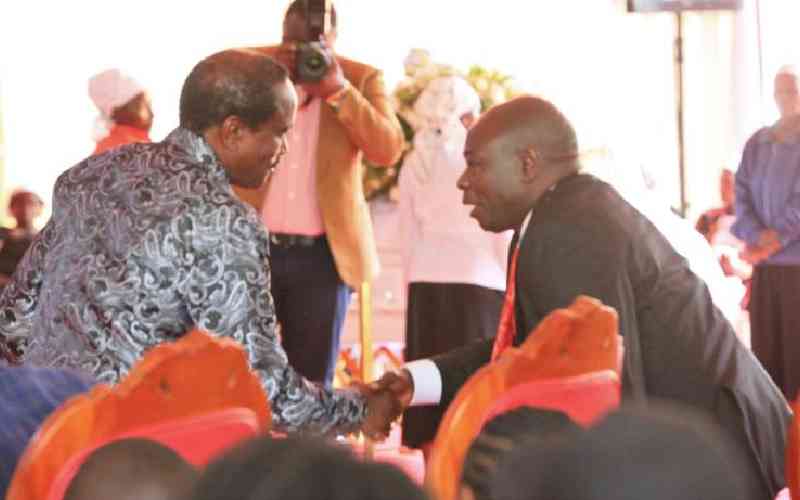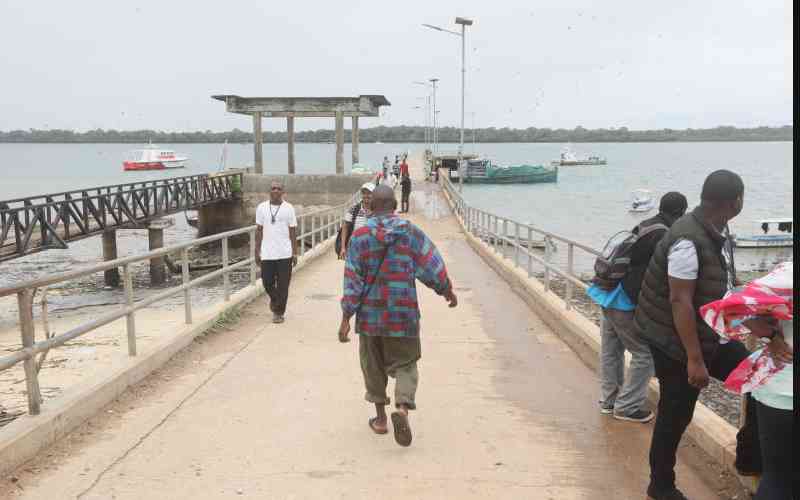By Ababu Namwamba
[email protected]
I write this from Štrbské Pleso, a breathtaking Slovakian resort in Vysoké Tatry in the Tatra Mountains of the Carpathian range, which forms a natural border between Slovakia and Poland. A favourite for tourists and winter sports, this is the heart of the Tatra National Park, Slovakia’s tourism crown jewel.
I chose to vacation here on the prompting of my good friend, H.E. Mikal Mlynar, Slovakia’s Ambassador to Kenya. While enjoying a leisurely boat ride in Lake Victoria on a private visit to my rural home in Budalang’i last October, Mikal challenged me to swap the tropical humidity of the lake basin for the temperate snow of Slovakia.
And after a fine week of exhilarating skiing, snowmobiles and mountain cable cars, during which my tribe has also enjoyed some uninterrupted quality time, it is one challenge I do not regret taking!
Nestled at the heart of Central Europe, Slovakia is a strikingly unique land of just over 5 million people, bordered by the Czech Republic, Austria, Poland, Ukraine and Hungary. Bratislava, on the banks of the idyllic Danube, is the capital.
The official language is Slovak, of the Slavic family. Slovakia became an independent state on 1 January 1993 after the peaceful Velvet Revolution that amicably dissolved Czechoslovakia into the Slovak and Czech Republics in the famous “Velvet Divorce”…a culmination of the end of Communist rule in 1989. A member of the UN, EU, NATO, OECD and WTA, Slovakia has served a two-year term on the UN Security Council, 2005-2007. Since 1 January 2009, the Euro has been the country’s national currency.
Slovakia is a parliamentary multi-party democracy, with a popularly elected president (currently Ivan Gašparovi?) as head of state and a majority prime minister (currently Robert Fico) as head of government. The country is devolved into 8 krajov (regions), with the 150-seat unicameral National Council (Národná rada Slovenskej republiky) as the top legislative body.
The Constitutional Court (Ústavný súd) is the supreme judicial organ in Slovakia, which also admits the International Court of Justice jurisdiction.
Dubbed the “Tatra Tiger”, Slovakia is a high-income advanced economy. Before the global recession, the country had experienced sustained high growth, making it the most bullish economy in the European Union, hitting a high of 10.5% of GDP in 2007. The 2.6% growth rate in 2013 still makes it the fastest growing economy in the Eurozone.
The 2013 GDP per capita was forecast at $15,272.99, compared to Kenya’s $1,800. Slovakia is an attractive country for foreign investors mainly because of its low wages and tax rates, and skilled labour force. FDI inflow grew more than 600% from 2000 and cumulatively reached an all-time high of $17.3 billion in 2006. Although Slovakia’s GDP derives mainly from services, the industrial sector is key, driven by car manufacturing and electrical engineering. Since 2007, Slovakia has been the world’s largest producer of cars per capita.
Slovakia became an aid provider in 2008 after the Ministry of Finance declared the economy developed enough to stop being an aid receiver. And so, while we celebrated our 50th independence anniversary as Slovakia marked only her 20th, this young nation whose population is eight times smaller than ours gives aid to Kenya! Slovak Development NGOs and academic institutions have been active in Kenya since 1995.
Slovak government ODA programme (Slovak Aid) has provided development assistance to Kenya since establishment in 2003, with Kenya one of Slovak Aid’s three priority countries, alongside Afghanistan and South Sudan. Currently there are 32 ongoing projects in the three main sectors of health, education and agriculture. Ambassador Mlynar tells me there is significant room for sharing experiences between our two countries on devolution, accountability and oversight, police reforms, parliamentary democracy and integration. And certainly investment and tourism.
 The Standard Group Plc is a
multi-media organization with investments in media platforms spanning newspaper
print operations, television, radio broadcasting, digital and online services. The
Standard Group is recognized as a leading multi-media house in Kenya with a key
influence in matters of national and international interest.
The Standard Group Plc is a
multi-media organization with investments in media platforms spanning newspaper
print operations, television, radio broadcasting, digital and online services. The
Standard Group is recognized as a leading multi-media house in Kenya with a key
influence in matters of national and international interest.
 The Standard Group Plc is a
multi-media organization with investments in media platforms spanning newspaper
print operations, television, radio broadcasting, digital and online services. The
Standard Group is recognized as a leading multi-media house in Kenya with a key
influence in matters of national and international interest.
The Standard Group Plc is a
multi-media organization with investments in media platforms spanning newspaper
print operations, television, radio broadcasting, digital and online services. The
Standard Group is recognized as a leading multi-media house in Kenya with a key
influence in matters of national and international interest.





